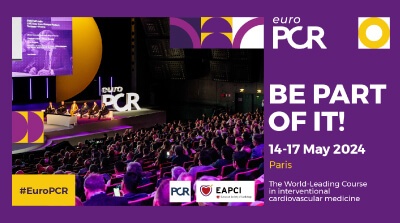Stent related adverse events after the first year see a constant 2-3% annual increase, reaching 20% by year 5 and 50% by year 10. BIOADAPTADOR RCT outcomes at 12 months have shown the safety and efficacy of DynamX Bioadaptor, establishing new reference parameters in arterial viability restoration.

The aim of this study was to report clinical outcomes at 2 years and to confirm outcomes with imaging showing hemodynamic restauration assessed with IVUS/OCT/QCA. Primary end point was non-inferiority target vessel failure.
The study looked at 445 patients, 223 were randomized to DynamX Bioadaptor and 222 to RESOLUTE ONYX. Mean age was 67 and they were mostly men. The most common clinical presentation was stable angina, and the anterior descending was the most affected artery. Around 23% of patients presented compromised bifurcations and nearly 20% had obstructions with moderate to severe calcification.
TLF at 1 year resulted 1.8% for the DynamX Bioadaptor group and 2.8% for the RESOLUTE ONYX (p<0.001 for non-inferiority). At 2 year followup, there was significant reduction of TLF in 59% (2.3% DynamX vs 5.5% RESOLUTE, HR=0.41, p=0.093). This reduction is owed to lower incidence of cardiovascular death, target vessel related MI and clinically driven target vessel revascularization.
Conclusion
The DynamX Bioadaptor, with its innovative design and action mechanism, restores hemodynamic modulation and offers a significant clinical benefit, establishing a new therapy and a new standard of treatment for patients with coronary artery disease.

Dr. Andrés Rodríguez.
Member of the Editorial Board of SOLACI.org.
Original Title: BIOADAPTOR RCT– 2-Year Outcomes Randomized Controlled Trial of Sirolimus-Eluting Bioadaptor Versus Zotarolimus-Eluting Drug-Eluting Stent.
Reference: Shigeru Saito MD et al.
Subscribe to our weekly newsletter
Get the latest scientific articles on interventional cardiology





